Faster insulins can be dramatically useful for AID (Automated Insulin Delivery) systems. Anything that reduces latency within the loop can improve our overall glycaemic control.
A topic often discussed amongst people looking to get faster insulins is the possibility of mixing insulins in pumps. I do have to be clear and point out that this is completely off-label, and not supported by anyone. Especially not by me.
However it is something I have done for myself, and this is a short discussion of a recent experiment.
The Theory
Mixing Novo insulins
Let’s start with considering the difference between NovoRapid and Fiasp. Both are insulin aspart, but Fiasp has had some nicotinamide (also known as niacinamide) added to speed up absorption. For reference, here’s the composition information from Novo’s product info for NovoLog (another name for NovoRapid) and for Fiasp.
Here’s a graph of the activity for each of these insulins ramping up and then fading over time. These graphs show the models that work for me in my oref1-based AID system using an exponential model where we specify the peak time (in minutes) and the overall duration (in hours). In my experience these numbers model the behaviour of these insulins very well for me.
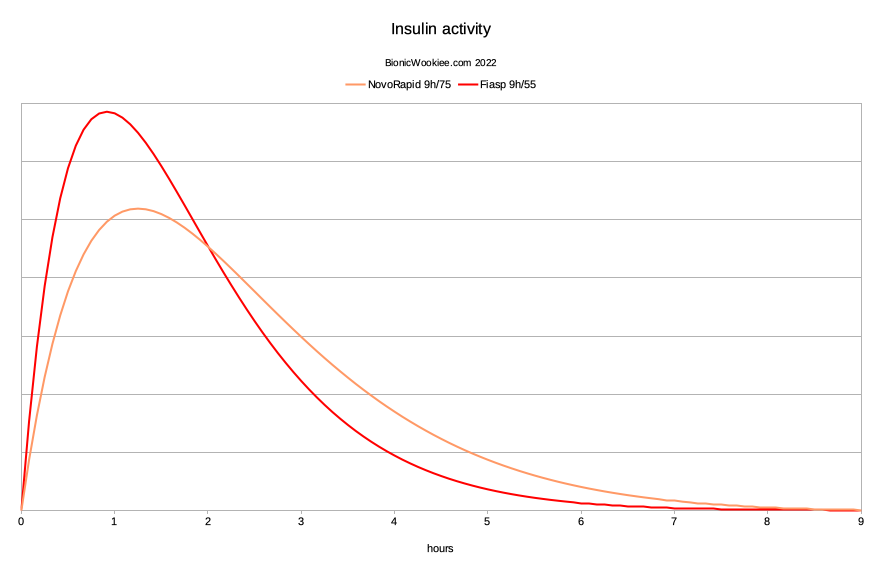
They both have the same overall duration, but the accelerant moves much of the absorption forward in time, so we end up with a profile that’s much “faster on, faster off”.
Mixing Lilly insulins
Instead of those Novo insulins, let’s look at Lilly’s Humalog and Lyumjev. Again, these are both insulin lispro, but Lyumjev has had a vasodilator (trepostinil) added to the mix to speed absorption. Lilly’s product information clarifies the differences (similarities) between Humalog and Lyumjev:
Now let’s look at the activity graphs that seem to model these insulins well for me:
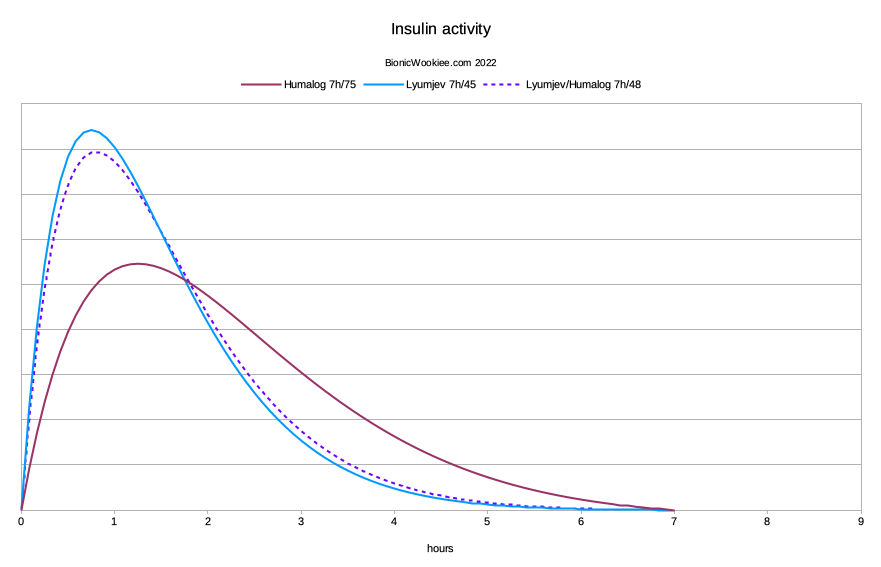
In this case the overall duration seems a bit shorter than the Novo insulins, plus the accelerant brings the peak of activity to 45 minutes (unlike Fiasp’s 55 minutes) which produces a much steeper peak.
Given that (again) the insulins are almost the same just with some accelerant added, I spent some months using a 50:50 mix of Humalog and Lyumjev to halve the concentration of accelerant. The major intent of this was to let my body acclimate to the trepostinil without experiencing the stinging side-effect which seems fairly common.
As I previously reported, this seems to have been very effective! By experimental observation I ended up using timing parameters for the mix that are shown in the dashed line on the above graph. Not exactly the same as 100% Lyumjev, but very close.
The latest experiment
So on the face of it Lyumjev seems to be the fastest kid on the block. “But wait” say some people. “What if we combined the nicotinamide of Fiasp with the trepostinil of Lyumjev? Can we get something even faster?”
Actually there are usually multiple drivers for the suggestion of mixing:
- Increased speed.
- Reduced risk of side-effects (e.g. trepostinil stinging, nicotinamide site inflammation).
- Stretching out minimal supply of imported Lyumjev.
Let’s start off by considering the baseline data from those graphs. What if we mixed Lyumjev and Fiasp and they didn’t interact? As if we had two pumps infusing half each in different sites. Then we’d just be looking at the average of the two:
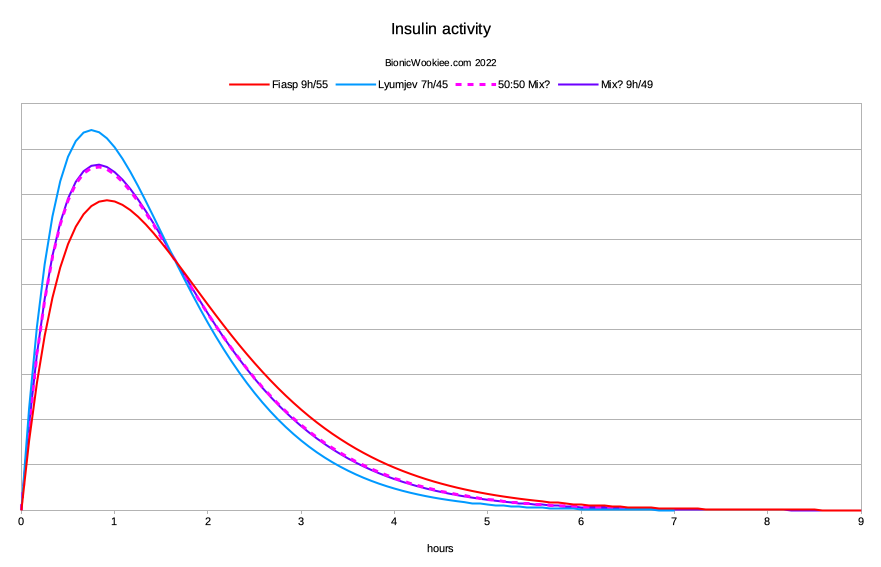
The dashed pink line is that average. As you see, it can be closely approximated with a 49 minute peak and 9 hour duration.
So as long as there’s no drastic interaction between the medicines, 9h/49 should be the baseline performance. But the theory was that the peak might actually move earlier than Lyumjev’s 45 minutes, not simply half-way between 45 and 55 minutes. To check that a practical experiment would be required.
From Theory to Practice
I made up a reservoir with the 50:50 mix of Fiasp and Lyumjev, and went ahead. After just under 5 days I stopped, but in that time made a few observations.
- I did manage some days of 100% time in range, but it did not seem “fast”.
100% in range for only a day is not amazing (although not unwelcome) and is partly just a sign that I’ve got the model close to right. - I experimented with 9-hour models with peaks starting at 42 minutes and leading to 47. I’m not sure I narrowed in on the best match before I stopped, but it was almost definitely not faster than Lyumjev’s 45 minutes.
- I had to increase my basal rates as well as manipulate the correction ratios. More than I was expecting.
On average my total daily dose increased by ~30% compared to 100% Lyumjev (and the Lyumjev/Humalog mix). This was dramatically different to the 5% changes I’ve observed with other insulins.
Apart from reducing the economy advantage of mixing, it did make me uncomfortable that some unexpected interaction was going on.
Given these observations I called an end to that experiment. Presumably I would notice more details if I continued for weeks, but I was happier stopping.
Conclusions
I saw no evidence that Fiasp’s nicotinamide can speed up Lyumjev.
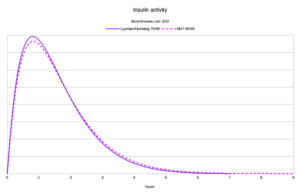 If I need to stretch out my supply of Lyumjev I will stick to mixing it with Humalog. Here’s that theoretical 9h/49 compared to the Humalog mix which I know works well for me. I’ll go with the simpler mix.
If I need to stretch out my supply of Lyumjev I will stick to mixing it with Humalog. Here’s that theoretical 9h/49 compared to the Humalog mix which I know works well for me. I’ll go with the simpler mix.

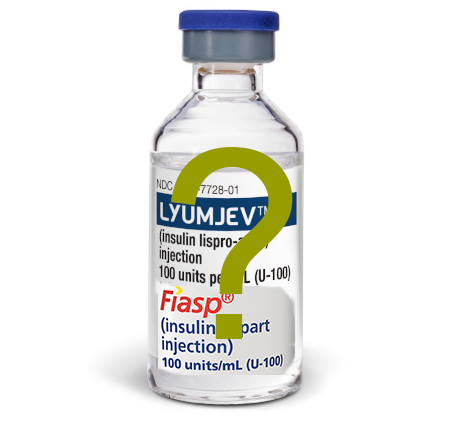


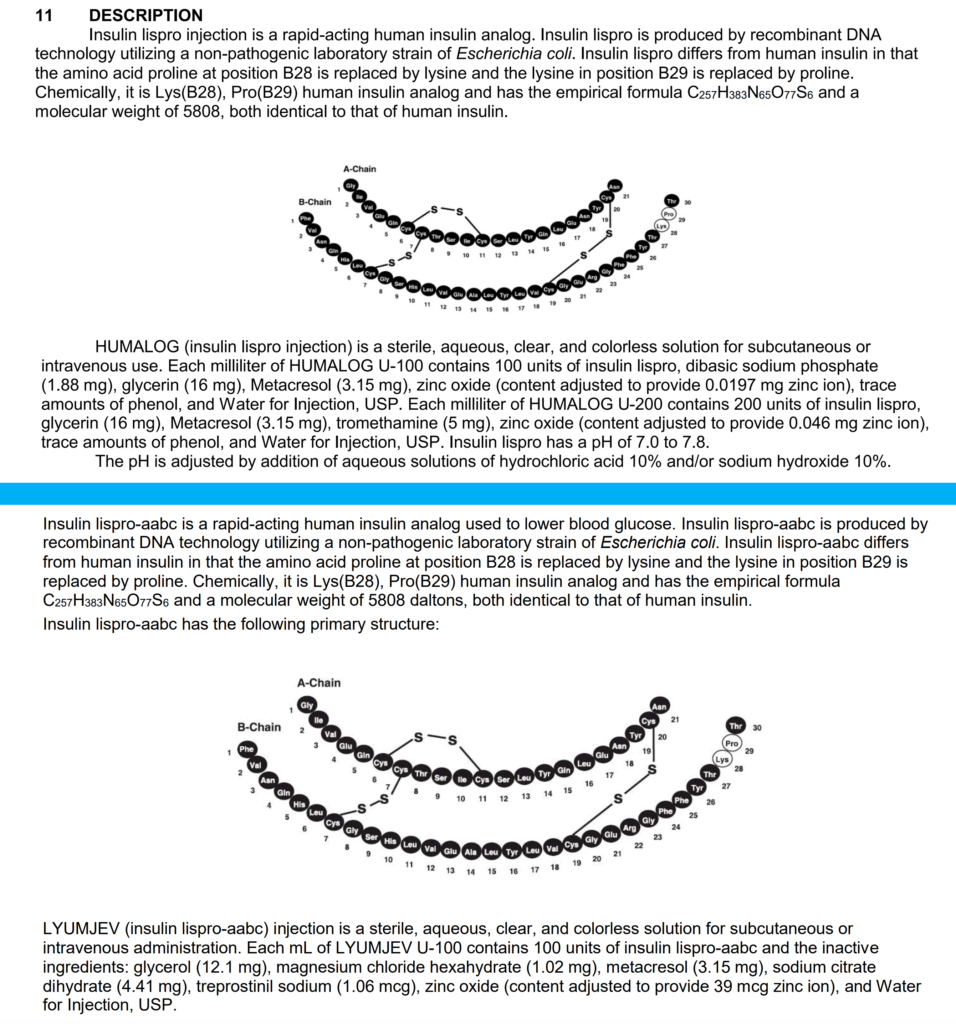
Very interesting. I have been using a 50/50 Fiasp/Novorapid mix for 1 year (since shortly into using Loop). I heard about this mix from a few places including your posts. Lyumjev is still not available in Canada. I would love to try it for its increased speed in correcting highs and shorter duration. My 50/50 FN however is already too fast for some meals (ie higher protein/fat) and I am just getting the hang of how to dial the carb clock ahead in Loop to compensate for this. Did you start your APS no bolus setup after starting with Lyumjev?
No I started it in 2020 after I’d been using Fiasp for a while.
And I’ve managed to maintain it even when going back to Humalog and NovoRapid.
Hard to imagine an insulin being “too fast for some meals”: that’d more be an issue with how you’re declaring the food to the system (with the issue being hidden by using slower insulins). I found when I got it right it still worked for the slower insulins (although with wider BG variation in full-auto mode obviously).
You are right that my “insulin too fast” issue is more about how I declare my carbs. It seems in Loop (or the FreeAPS version I’m using) even when you pick the “pizza” icon which lengthens the absorption time (also can be dialed manually) it doesn’t change the upfront bolus much at all. So I am left dialing the clock forward on when my carbs are eaten which preboluses some now and then some later – the desired effect. It is a guessing game though, and I’m wondering if an APS algorithm might do this better for me. I also wonder if APS might do a better job than Loop AB autopiloting when I underestimate my carbs. I’m at an 83% TIR now over the last 90 days and haven’t exceeded 85% (over 90 days) with my current setup: FreeAPS Loop and 50:50 FN. I do eat a fair amount of carbs (200-250 per day), and understand the higher margin for error that goes along with that vs a lower carb diet. I think I will give FreeAPS X a go soon (an iPhone implementation of oref1). Any advice for me in making the switch?
In general I sense that with oref1/UAM if I nail the carb count it’s great.
If I slightly OVERestimate the carbs it works great, and just decays the surplus.
If I massively overestimate the carbs it can get into trouble.
If I UNDERestimate the carbs it doesn’t work as well, and in fact once I’ve got things tuned then NOT declaring can be more effective than underestimating.
I don’t know how that plays out with Loop though.
Hi David,
I’ve used NovoRapid with 75 min peak time and 7,5h DIA for a long time. As I could get some Lyumjev I only had NovoRapid at home, so I’ve mixed them. To avoid site, occlusion, etc. issues I’ve used only 10% Lyumjev + 90% NovoRapid and now 20% Lyumjev + 90% NovoRapid. I was surprised of the effect. This seems to work with 50-55m peak time and 6-7h DIA. I intend to raise the amount of Lyumjev over time to 50%, but that needs some more weeks.
This is awesome. I found your site doing a search about mixing Humalog and Lyumjev. I stumbled on this practice myself as I was trying to keep the benefits of Lyumjev without the stinging effects (and site inflammation). I actually find that I have to mix much less than 50% Lyumjev to avoid the stinging, but I still get most of the rapid action benefit. I fill a 2ml mobi cartridge to about .4mL then the rest of the way with Humalog.
Thanx for your article. I would love to try lyumjev and novolog mix, but all I’ve read states they are not the same basic insulins such as humalog and lyumjev, and are not compatible.
Any real tests of combining novolog and lyumjev or there?
I haven’t tried that (and admittedly don’t see a need). Certainly the Humalog and Lyumjev blend works very well for me. Yes insulin aspart (in NovoRapid/NovoLog) is different to the insulin lispro in Humalog and Lyumjev. I did try a mix of Lyumjev and Fiasp (which is insulin aspart) and it was not impressive. I would be surprised if NovoRapid+Lyumjev was any better.